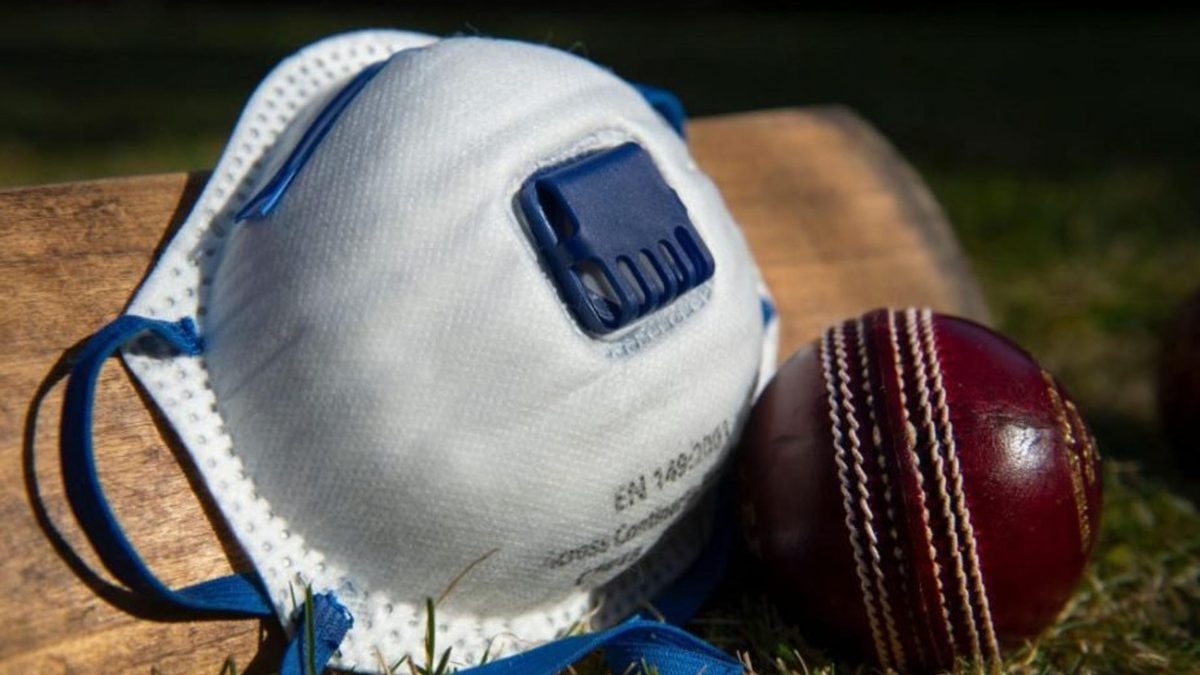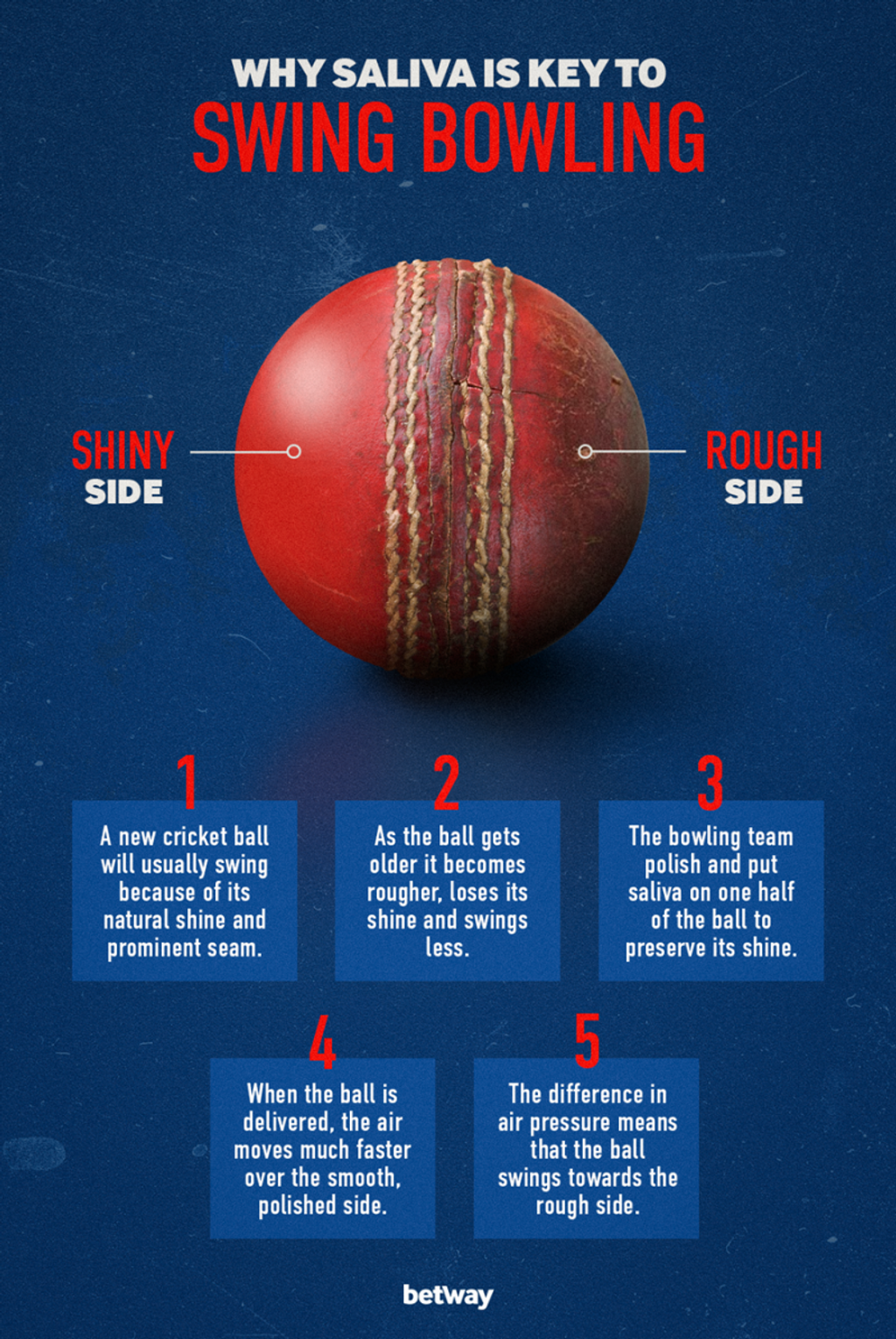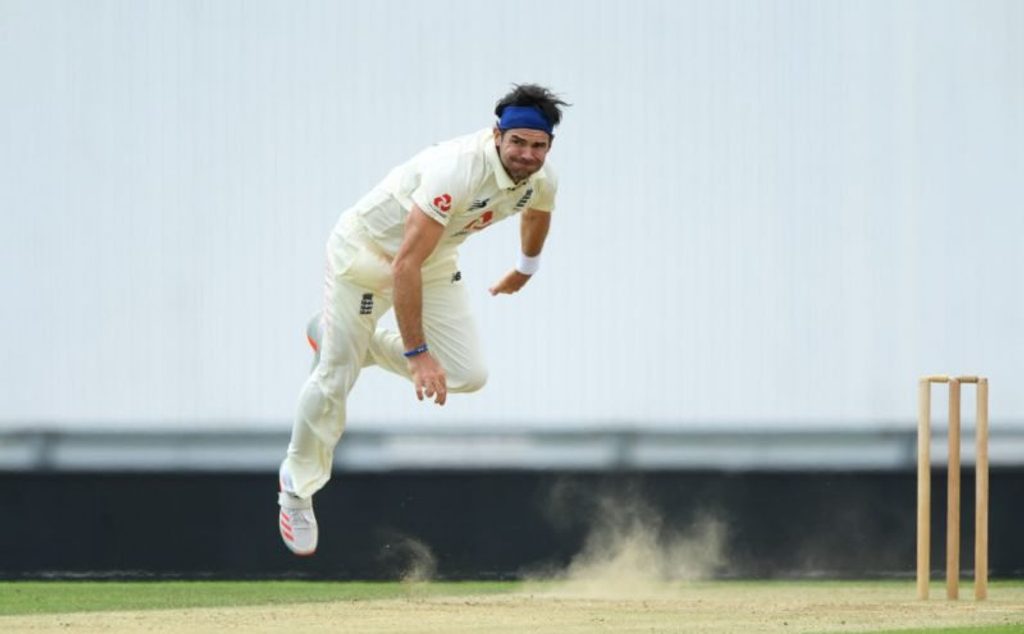
Charl Langeveldt, South Africa bowling coach and former Proteas quick, discusses how much difference the ICC’s ban on using saliva to help maintain the condition of the cricket ball will make to swing bowling and what bowlers can do to make up for it.
It is a sight so familiar on a cricket field that nobody takes any notice of it.
The wicketkeeper watches the ball thud into their gloves and flings it off to first slip, who licks a finger, shines the ball, and starts rubbing it against their trousers.
The ball then gets thrown to mid-off, who repeats the process, covering one side of it with saliva. It gets passed onto the bowler, who gives it one more dose of spit and shine for good measure.
While it’s not particularly hygienic, the process has never been questioned. The fielding team do it in order to protect the shine on one side of the ball, which – with air moving much faster over the smooth side than the rough one – enables it to swing.
But, in a Covid-19-affected world, it’s a detail that has threatened the chances of any cricket taking place at all.
Clearly, in these times, hurling a ball covered in each other’s saliva around the field is dangerous, whether it be in a professional match or just an amateur knockaround. UK Prime Minister Boris Johnson recently described the cricket ball as a “vector of the disease”.
The ICC has therefore banned the use of saliva during the upcoming Test series between England and West Indies. It is an understandable decision, but one that will provide a challenge for bowlers, who must now find new ways to swing the ball.
“The maintenance of the ball is key, particularly in England,” says Charl Langeveldt, the South Africa men’s bowling coach, who took 116 wickets in 72 ODIs and six Test matches for the Proteas.
“It’s a big plus for one of our bowlers if he can use saliva – it’s a skill looking after the ball. We really focus on polishing it. Somebody gets assigned to looking after the ball and making sure that one side is shiny.

“That is especially the case in England, because they use the Dukes ball. Once one side of a Dukes ball gets scuffed up and you polish the other side, it does swing a lot more and it swings for longer.
“I don’t know how they’re going to do it. I’m going to be interested to watch how swing bowlers like Jimmy Anderson manage.”
Langeveldt told Betway, placing saliva on the ball as “second nature”, and England bowlers have been frantically retraining themselves not to instinctively do it in practice over the last few weeks.
Chris Woakes and Stuart Broad have already revealed that kicking the habit is more difficult than they had imagined, but Woakes is confident that the behaviour of the Dukes ball won’t change too much despite the restrictions.
“Luckily enough, the ball moves around in England anyway,” he said in May.
“The Dukes always gives you a little bit of something, so hopefully that can continue. We will find ways to shine the ball, whether that’s being a little bit more aggressive on the shining side of things.
“It’s going to be interesting over the next few weeks, trying to figure out the best way to get the ball moving.”
It is undeniable that swing bowlers in England benefit from other natural conditions.
Dark, gloomy weather is common during the British summer, with the cloud cover and wind generally considered to have a major bearing on the ball moving in the air.
Langeveldt played for Somerset, Leicestershire, Derbyshire and Kent during four spells in the County Championship and says that the weather conditions were decisive when he was trying to swing the ball.
“I found it a lot harder when the sun was out,” he says, “especially down south at venues such as the Ageas Bowl,” – where England play West Indies in the first Test.
“For some reason, it was hard to swing the ball there when overhead conditions weren’t favouring the bowler. Overhead conditions do help the ball to swing a lot more in England.”
It is little surprise, then, that England have produced some of the greatest swing bowlers in history, chief among them James Anderson, who has taken more Test wickets than any pace bowler in history.
[caption id=”attachment_164522″ align=”alignnone” width=”800″] Anderson is the most prolific seamer in Test history[/caption]
Anderson is the most prolific seamer in Test history[/caption]
But Anderson is not a one-trick pony, nor a mere product of his home conditions. Langeveldt uses his exquisite technique as an example to follow when trying to teach the young South Africa bowlers he is working with now how to swing the ball for.
“I use Anderson a lot because he’s got the perfect wrist,” says Langeveldt. “He bowls it out and in.
“You don’t want to change bowlers’ styles too much, but I think getting the wrist in a strong position is really important.
“If you look at a guy like Kagiso Rabada, he was more of a seam bowler when he came onto the scene, and he worked on getting the seam position and wrist in a stronger position to be able to swing the ball more.
“Then there’s Anrich Nortje, who bowls 140-145kph but needs a bit more variety. Anderson is a great example to these guys.”
While good ball maintenance and helpful conditions virtually guarantee that bowlers will find some swing in England, the same cannot be said all around the world.
Langeveldt namechecks India’s Bhuvneshwar Kumar as one of the best swing bowlers he has ever seen, due to his ability to move the ball where other bowlers struggle.
“Kumar has been brilliant,” says Langeveldt. “He swings it both ways in Indian conditions and then when he came to South Africa he was successful.
“The subcontinent is totally different. They play with an SG ball, which swings for a short while but gets scuffed so quickly.
“You have to be more attacking, hitting the stumps and making the batsmen play, and the length is probably a bit shorter because the ball doesn’t swing as much.”
Perhaps it shouldn’t come as a surprise, then, that Dale Steyn – arguably South Africa’s greatest ever bowler – recorded his career-best figures in a Test match in Nagpur in 2009.
[caption id=”attachment_164524″ align=”alignnone” width=”800″] Charles Langeveldt took 100 ODI wickets for South Africa[/caption]
Charles Langeveldt took 100 ODI wickets for South Africa[/caption]
As well as being a monstrous bowler in favourable conditions, Steyn, who took 439 Test wickets, was a master when things weren’t in his favour, too.
“Steyn was always close to the stumps,” says Langeveldt, “so you had to play at most of his deliveries.
“It wasn’t always big swing, but he forced the batsmen to play a lot more than someone like Jimmy.
“He adjusted to conditions, so if the ball was swinging too much he would come a bit wider and change the angle that he was bowling from. He was brilliant in that way.”
With restrictions on saliva not likely to go away any time soon, it is that kind of adaptability that bowlers will need if they are to use swing effectively in cricket’s new normal.








